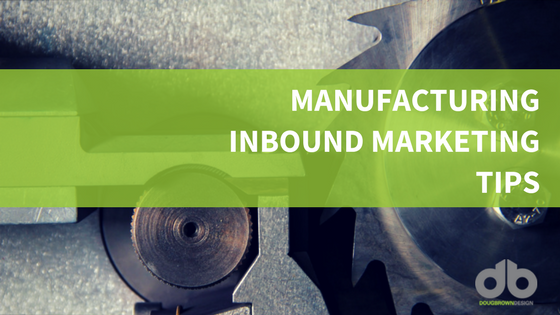Manufacturers can experience growth by using inbound marketing strategically
Manufacturing tends to lag behind other industries in marketing. Their growth is fueled by demand and acquisitions rather than organic. So, why try manufacturing inbound marketing? Because it’s the evolution of marketing, and manufacturers still refuse to let go of “how it’s always been done.”
Manufacturing continues to use more traditional channels for sales and marketing like advertising, dealer networks and territory sales managers. They tend to have erroneous beliefs about the buyers, believing that aren’t researching topics online or participating in social media. That’s simply not the case, either for the seasoned or novice buyer. Here’s some data that shatters those fallacies:
- B2B customers conduct at least 12 searches before checking a specific brand’s website. This stat reiterates the need to produce quality content that provides answers and solutions.
- Customers spend about 50 percent of their time online engaging with custom content. When you write for your target buyer, they’ll be more interested. Relevance matters in content creation.
- Inbound marketing yields three times MORE leads per dollar than traditional marketing.
- Inbound marketing strategies offer real results as seen in a case study from the Weidert Group. Their client saw gains in website traffic, quality leads, social media referral and organic search ranking, resulting in over $3 million pipeline opportunities.
Now that we’ve cleared that up, let’s talk specifically about manufacturing inbound marketing tips that your business can adopt.
Write content that is benefit focused not product focused
While features of your specific products are important, they should never be the focus of your content marketing plan. Instead write about how they solve a problem, make a process simpler or positively impact the user’s experience. For example, if you manufacture LED lighting for commercial use, focus on the many benefits of using this lighting like long-life and reduced energy costs. Don’t be overly technical in the exact specifications of your product, talk about how it provides real benefits. The exact specification conversation takes place much later in the buying process. First, get your audience to understand what’s in it for them to use your product.
Use inclusive language like “you”
Manufacturing tends to use third person in its content. This is often because manufacturers don’t grasp that even as a B2B business, you’re still really P2P (person to person). Businesses don’t sell to other businesses; it’s people selling to people. Something as easy as changing tense can bring more authenticity to every piece of content from blogs to product descriptions.
Leverage video
The process of how you make what you make is an amazing content opportunity. It also puts a face on your business. Using video to explain a process and show the human side of manufacturing can yield great engagement. Video can be used to drive leads on your website and social media platforms.
Embrace social media
Social media marketing is a part of the world of marketing. You can’t ignore it. Because f you’re not using it, your competitors certainly are. Before you dismiss social media as a waste time, consider this statistic: Facebook influences at least 52 percent of a buyer’s online and offline purchases.
Use social media to engage and inform. Don’t push product; push ideas. It’s also not a bad thing to have a little fun. Manufacturing doesn’t have to be so stiff. Think about how to integrate tactics like gamifaction or user generated content that will make you stand out on social media. Get involved in LinkedIn groups that are specific to your buyer. Try social media ads on Facebook and target buyers based on interests, job titles and demographics.
Generate and nurture leads
Many manufactures, as noted in the introduction, use outdated and archaic marketing and sales infrastructures. If you are still using these practices, how’s that working for you? What’s your ROI? Or can you even calculate it?
An inbound marketing infrastructure facilitates lead generation. Use landing pages to offer a whitepaper or other helpful content. If it’s valuable enough to them, they’ll give you their contact information.
Now it’s time to nurture not pounce. You’ve got their email address, so you can set-up a drip campaign that slowly moves the prospect down the buyer’s journey. By offering value, your audience will begin to trust you and see you as a credible source.
Design with purpose
To execute a cohesive inbound marketing strategy, you must present a modern, easy-to-use website. Your website must function as a publisher of content (blogs, video, etc), an educator and a lead generator. If your website is dated and not mobile friendly, you cannot implement an inbound marketing strategy. You’ve worked hard on content and lead generation efforts, don’t fall flat because your website can’t sustain it. Read more about what your website needs to support content marketing.
Manufacturing has tremendous opportunity within inbound marketing. The first thing you must do is to refute your current misconceptions. Manufacturing inbound marketing is a proven approach to growth. Don’t miss this amazing chance to increase sales, brand awareness and more.
The first step to a manufacturing inbound marketing plan is to take a serious, unbiased look at your current website. Let us perform a website audit for your brand today. We’ll give you a no BS review of your site and how to make it better!
[/et_pb_text][/et_pb_column][/et_pb_row][/et_pb_section]


